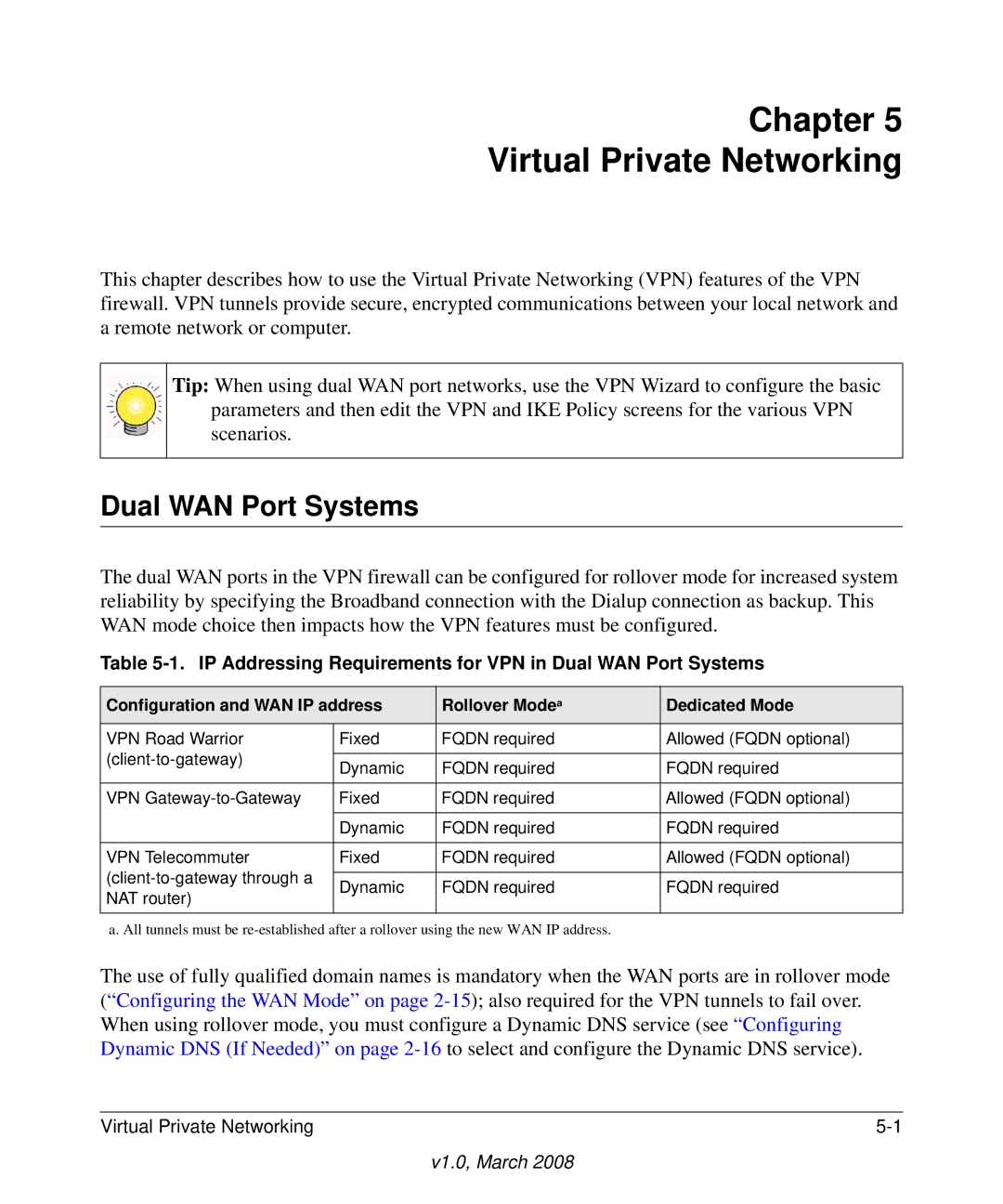
Chapter 5
Virtual Private Networking
This chapter describes how to use the Virtual Private Networking (VPN) features of the VPN firewall. VPN tunnels provide secure, encrypted communications between your local network and a remote network or computer.
Tip: When using dual WAN port networks, use the VPN Wizard to configure the basic parameters and then edit the VPN and IKE Policy screens for the various VPN scenarios.
Dual WAN Port Systems
The dual WAN ports in the VPN firewall can be configured for rollover mode for increased system reliability by specifying the Broadband connection with the Dialup connection as backup. This WAN mode choice then impacts how the VPN features must be configured.
Table 5-1. IP Addressing Requirements for VPN in Dual WAN Port Systems
Configuration and WAN IP address | Rollover Modea | Dedicated Mode | ||
|
|
|
| |
VPN Road Warrior | Fixed | FQDN required | Allowed (FQDN optional) | |
|
|
| ||
Dynamic | FQDN required | FQDN required | ||
| ||||
|
|
|
| |
VPN | Fixed | FQDN required | Allowed (FQDN optional) | |
|
|
|
| |
| Dynamic | FQDN required | FQDN required | |
|
|
|
| |
VPN Telecommuter | Fixed | FQDN required | Allowed (FQDN optional) | |
|
|
| ||
Dynamic | FQDN required | FQDN required | ||
NAT router) | ||||
|
|
| ||
|
|
|
| |
a. All tunnels must be
The use of fully qualified domain names is mandatory when the WAN ports are in rollover mode (“Configuring the WAN Mode” on page
Virtual Private Networking |
